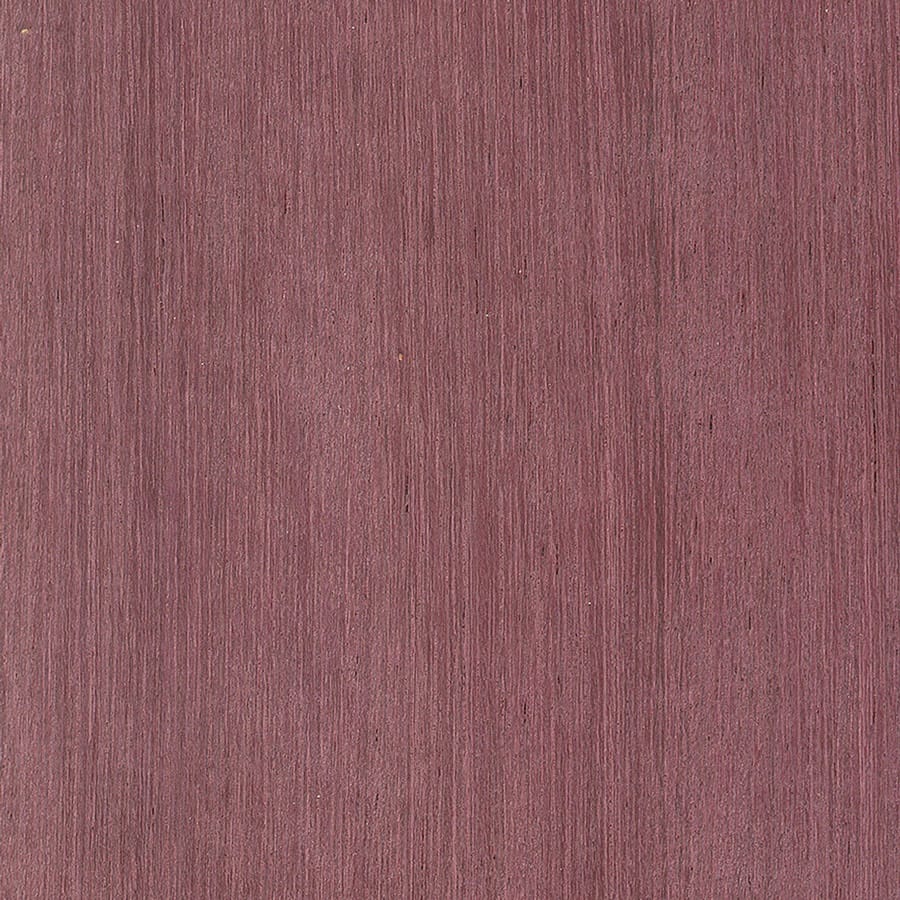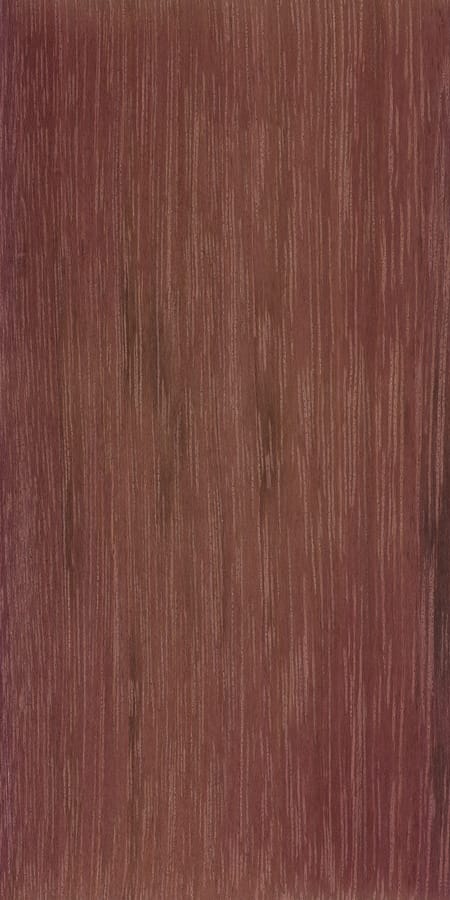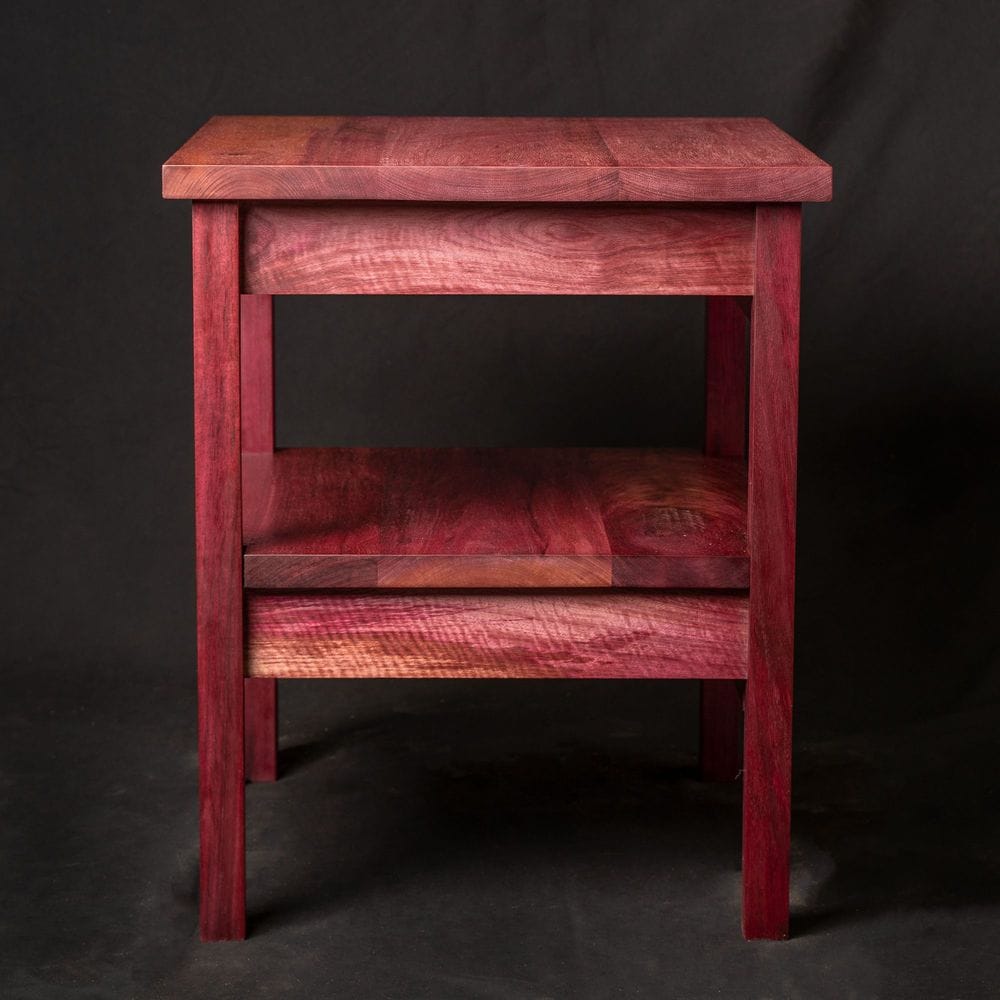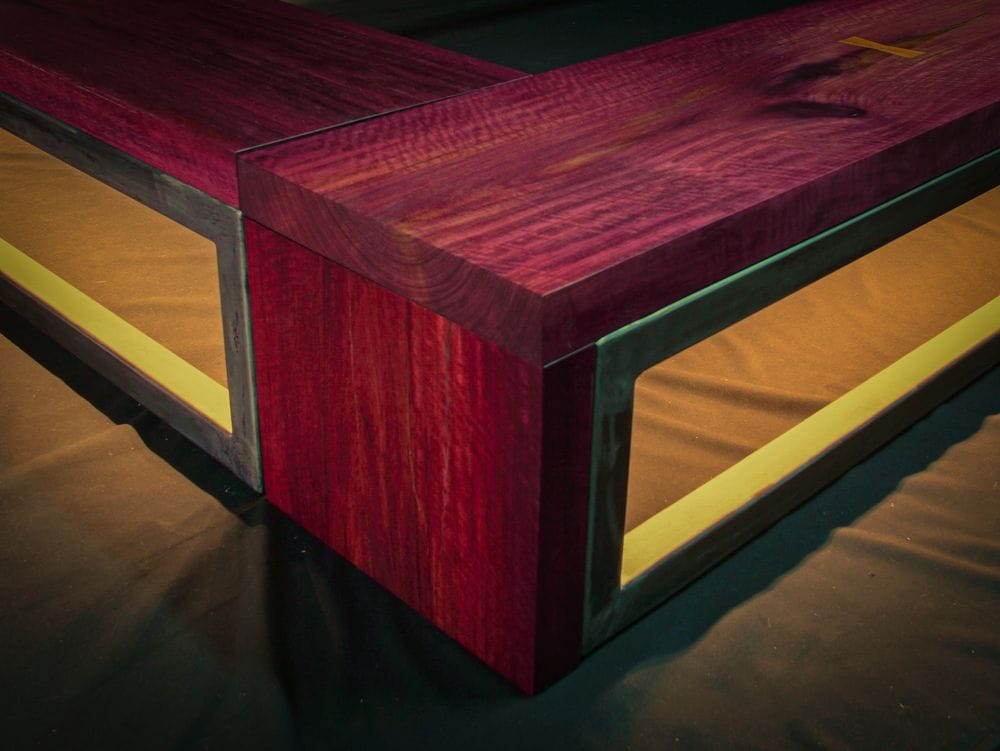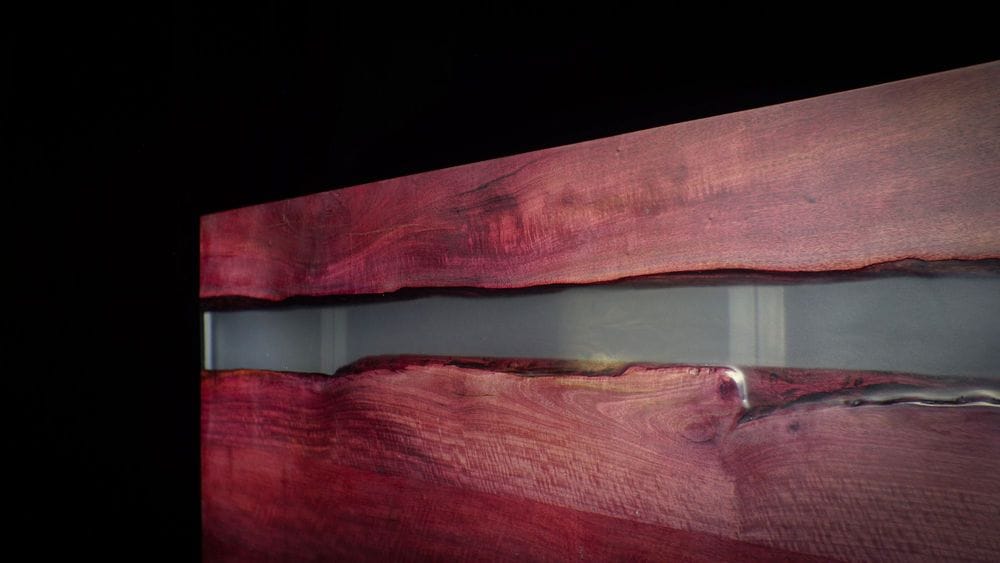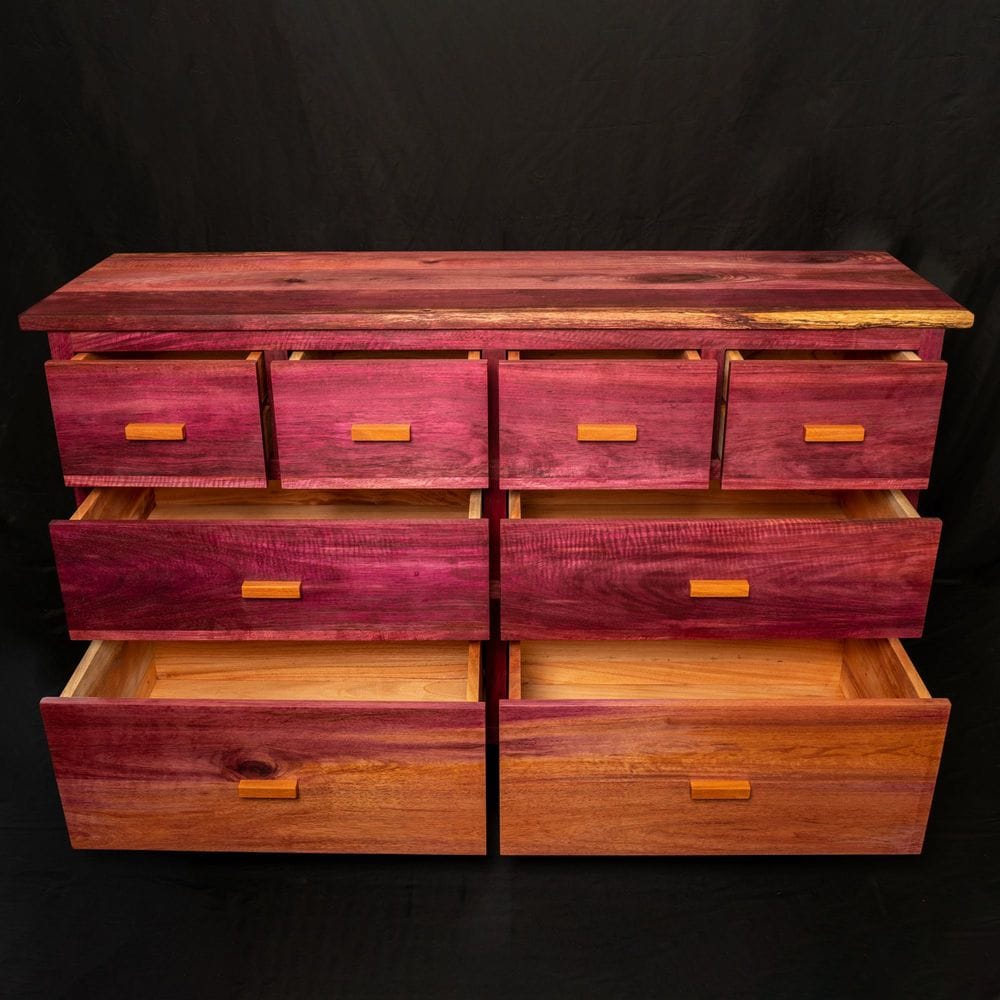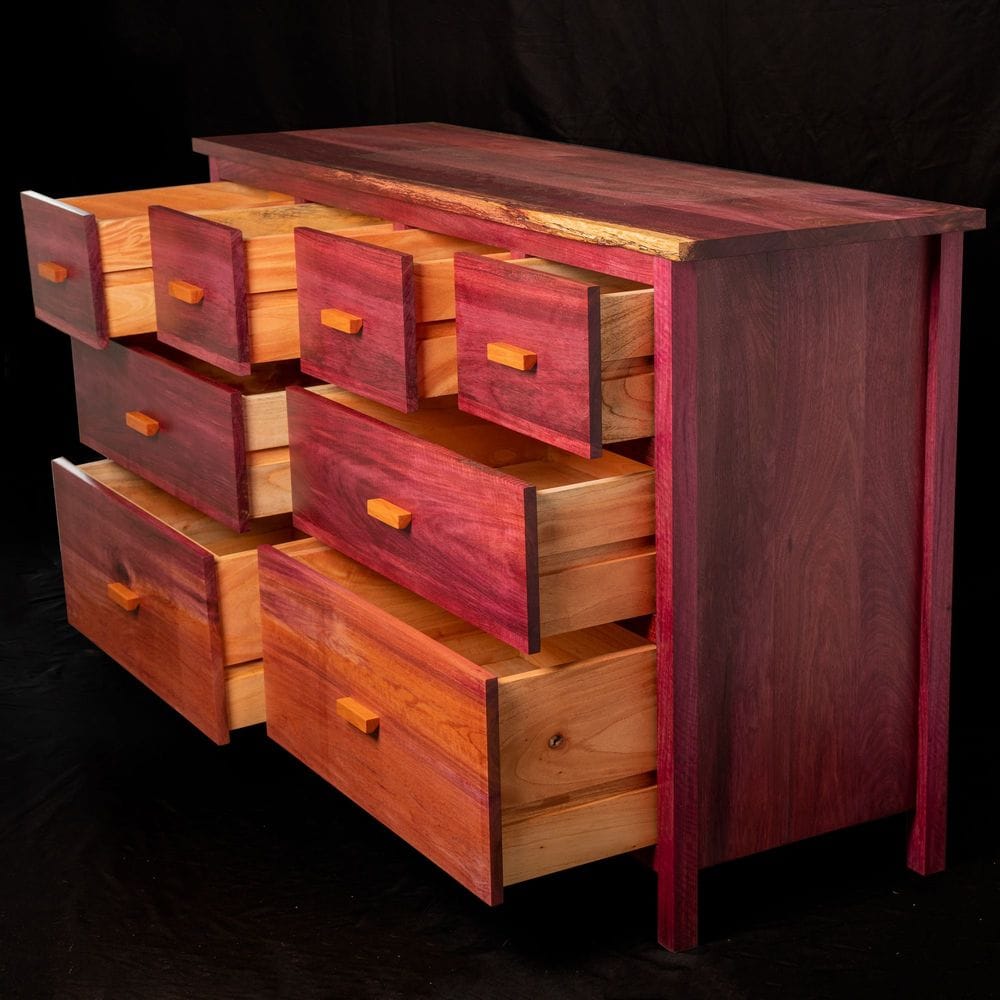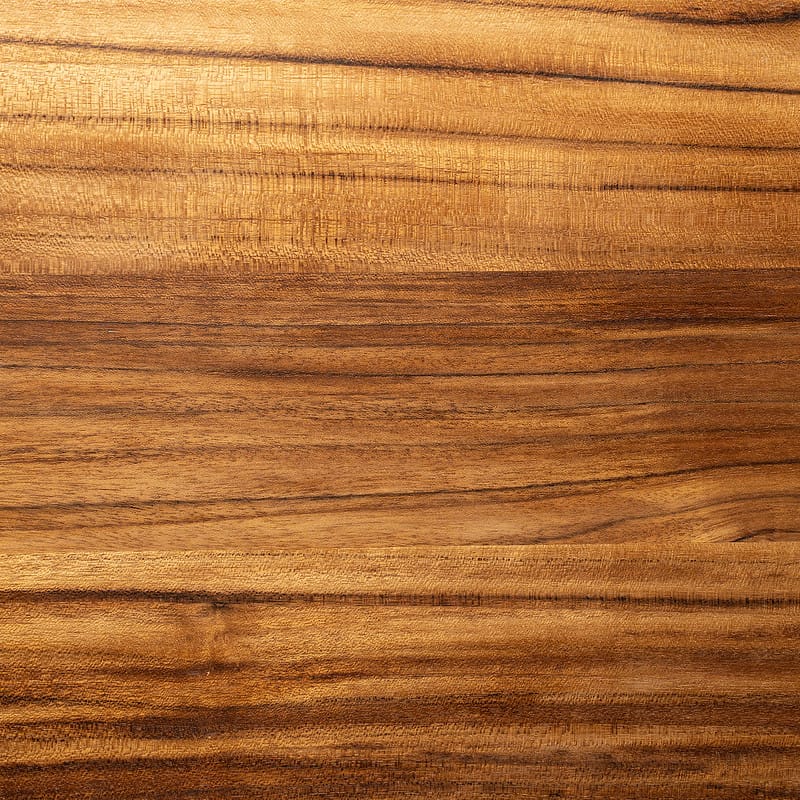Purpleheart, known for its striking color and durability, is a favorite among woodworkers and designers looking to add a unique splash of color to their projects. This hardwood, also referred to as amaranth, roxinho, violeta, or Nazareno in parts of Central America, is native to Central and South America, thriving from Mexico down to southern Brazil. Purpleheart trees can grow impressively tall, reaching heights of 100-170 feet, with trunk diameters between 3-5 feet.
Noteworthy for its dynamic color transformation, purpleheart wood shifts from a dull grayish/purplish brown when freshly cut to a deep eggplant purple upon exposure to air and light. Over time, and with exposure to UV light, it darkens to a rich brown with hints of purple, a process that can be minimized with UV inhibiting finishes.
With a Janka hardness of 2,520 lbf, purpleheart boasts excellent strength, making it suitable for a variety of applications including flooring, furniture, boatbuilding, and heavy construction. Its durability extends to very good rot resistance and the ability to withstand decay and most insect attacks, though it is somewhat susceptible to marine borers.
Working with purpleheart can be challenging due to its tendency to exude a gummy resin when heated by dull tools or high cutter speeds, potentially complicating machining processes. It also has a moderate dulling effect on cutters and can be difficult to plane without tearout depending on the grain orientation.
While reactions are uncommon, purpleheart has been reported as a sensitizer, with the most common reactions being eye and skin irritation, along with nausea. It is widely available and priced in the low to medium range for an imported hardwood, making it accessible for a wide range of projects.

